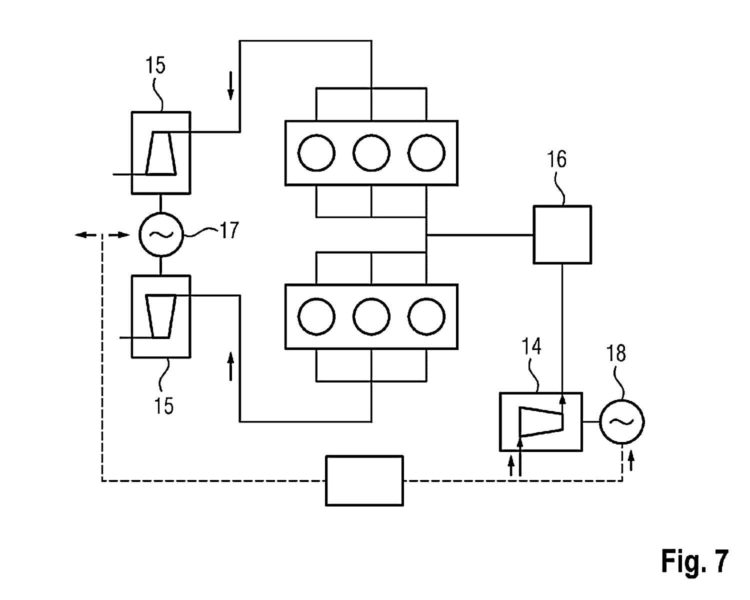
I know what you’re thinking, “Okay, we get it, Porsche made the Taycan Turbo, it’s electric, and it doesn’t have a turbocharger. The joke is old, get over it.” No, no, no, that’s not what I’m talking about here. This is something totally new and different, and like the Taycan, it’s incredibly forward thinking and will make future Porsches even faster than they already are. No, this is a brand new look at turbocharging, which splits the compressor housing and the turbine housing altogether. The only thing connecting them is an electric generator!
Thanks to our friends at The Drive, we now know that Porsche has filed a patent for this ingenious new turbocharger design that completely disconnects the turbine housing from the cold side compressor. Not only will this result in cooler charge air going into the intake, but it allows the hot side of the turbo to be much smaller and more responsive, while the cold side can be much larger and more efficient. Normally a large compressor wheel would take much longer in the rev range to spool up, creating the dreaded turbo lag, but in this system the two halves of the turbocharger act somewhat independently.
So how does this system work? Well, with a pair of smaller turbines on the exhaust, spooling up basically as soon as the engine starts up the rev range, they act on a small generator instead of directly compressing the intake air. This pair of turbines use this generator to charge up a battery or capacitor bank with electricity. A single large compressor wheel is then placed directly at the intake manifold, powered by a small high-RPM electric motor.
This trick setup allows Porsche to completely separate the actions of the turbines and compressor. That means, so long as there is enough energy in the battery or capacitor, the computer can spool up the compressor and provide boost at any RPM, including from a stop, to fill torque at the low end. Turbo lag is already slowly becoming a thing of the past, but this system, if Porsche can ever put it into production, would render it 100 percent obsolete.
This sort of makes me wonder if Porsche didn’t learn this tech, or at least set the ball in motion with its FIA WEC LMP1 project. Perhaps this is more evidence of racing improving the road cars through trickle down technology. It’s good to know that Porsche is still expending effort to make the next generation 911 Turbo faster, more efficient, and quicker than the previous one. That’s a check you can take all the way to the bank, at least until the all-electric future comes around.
